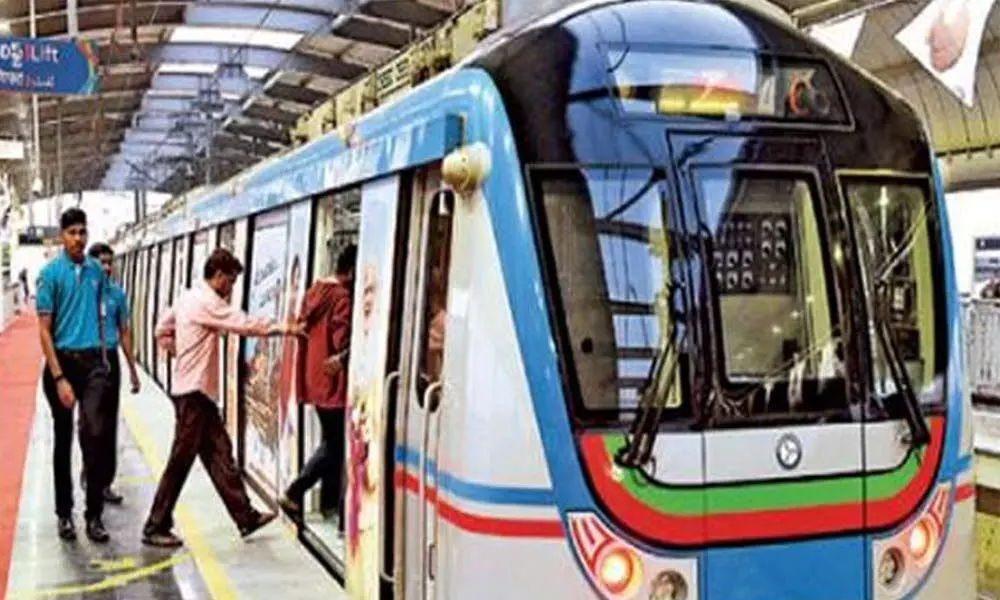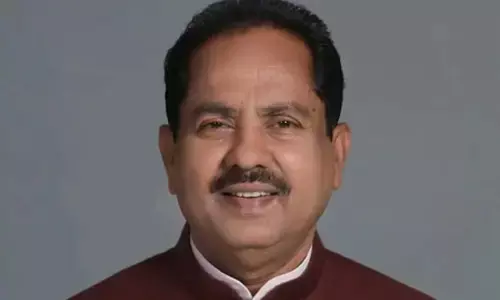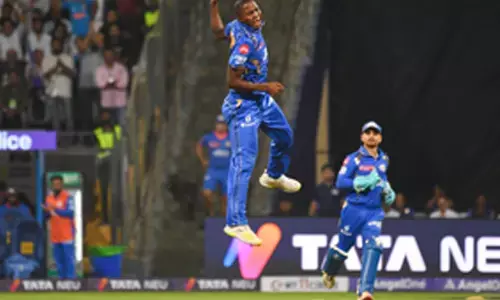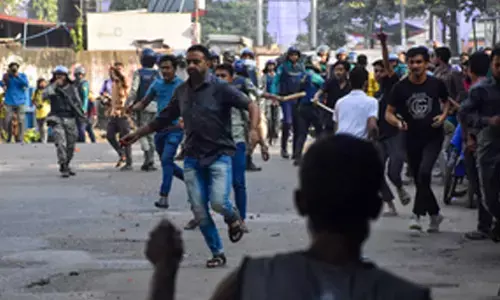Can Hyderabad Metro Rail be saved?

Hyderabad Metro Rail
It was interesting to read some articles recently in The Hans India about Hyderabad Metro Rail. As a management trainee I feel that the Hyderabad which has emerged as IT hub and "most liveable city," as often quoted by the Minister for IT KT Rama Rao, there is every need to make it a truly global city in real terms.
It was interesting to read some articles recently in The Hans India about Hyderabad Metro Rail. As a management trainee I feel that the Hyderabad which has emerged as IT hub and "most liveable city," as often quoted by the Minister for IT KT Rama Rao, there is every need to make it a truly global city in real terms.
The phenomenal growth witnessed by the city from a large village in 1990s to top end metro having top end pharma companies, several IT companies like Google, Apple, Facebook, Amazon etc and being a truly cosmopolitan city with Ganga Jamun Tehzeeb, one of the best airports, and one of the longest Metro rail network in the country has fuelled giant ecosystem. Of course, all this has taken its own toll.
The increasing pressure of the burgeoning population has always put Hyderabad's transportation system under constant pressure. Unlike Mumbai, Hyderabad does not have a strong multi- modal transport system. The metro rail was introduced after some initial hiccups as mass rapid transit system in 2017. But we are now seeing articles that this icon seems to be struggling for its survival. If reports are to be believed it is not getting any financial support from the government and the accumulated losses was close to Rs 4000 crore.
While daily loss was Rs five crore, the meagre revenue earning was around Rs one crore. This is said to be the situation of a country's second major metro network operated by SPV by L&T group. Management principles say that unless the stake holders come forward and support the project, running such major network becomes a gigantic and near impossible task.
Studies indicate that Hyderabad Metro Rail had a target of carrying about 24 lac passengers but hardly four lakh are travelling every day. While Covid-19 was one of the reasons for long shut down of the services as most companies had gone in for work from home mode, there are other factors too which had hit the footfall. While this could be a temporary setback, the mute question remains why this clean and fast airconditioned alternative could not attract the people as it was anticipated. The main reason is lack of first and last mile connectivity. This has led the citizens to continue with their habit of using personal vehicles over public transportation. It is said that only about 33 percent use public transport system here as against 75 percent in Europe.
In countries which have effective public transport system like Tube or some other mode of rapid transport system, they are well connected with feeder services. Public transport in Singapore is among the world's most cost-efficient systems. Almost 90% Hong Kong's population uses the public transit system. But here of late we have seen several reports on how the Hyderabad Metro Rail is struggling and how the operator has been looking for governmental hand holding. Not sure, if any aid will come for this iconic project, but the moot question remains, how to wriggle out of the ongoing woes of urban transportation? We all know Covid is here to stay, and we need to learn to live with it.
The authorities operating the Hyderabad Metro Rail have clarified and carried out information campaigns on the Covid protocol and measures being adopted to ensure high levels of safety and security for the users of the System during Covid times. Now is the right time to re-think and revisit the languishing issues of transportation in Hyderabad. Even when the state government is aggressively pushing for multi-crore Metro Neo Projects in Hyderabad and Warangal, it is ironical that when already one such multi-crore operational metro rail service is in the red, what future holds for these new projects specially in absence of any robust first and last mile connectivity?
Experts feel that its high time, the government takes a serious view of this issue and perhaps it may be better if the government brings entire public transport system under one umbrella. Recently, I had opportunity to travel by Mumbai Metro which is also operated by private players, but I am told it too was bleeding financially. The Government and civic authorities should come up with a sustainable and long term solution. In fact, it can either seek the help of different expert organisations which deal with urban transport management and other experts to find a solution to see that the Metro rail as rapid transport system becomes popular once again.
The E-vehicles are being promoted by almost all governments. May be introduction of Electric three-wheelers (e-rickshaws) or cycle rickshaws can be an option to provide easy connectivity. In Delhi the old system of cycle rickshaws has been revived in areas like Janak Puri. This has helped the commuters in finding affordable last mile connectivity and helped public in adopting public transport. I am stating this out of my personal experience.
It is high time this transformation occurs sooner than later.














